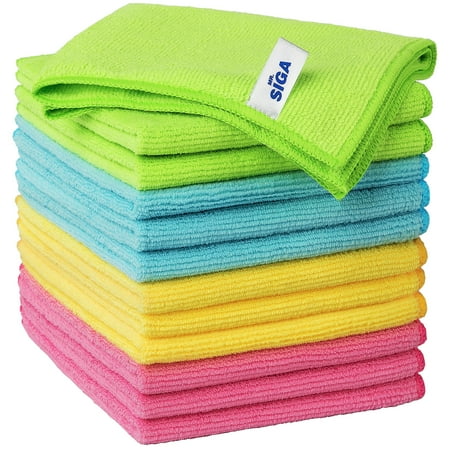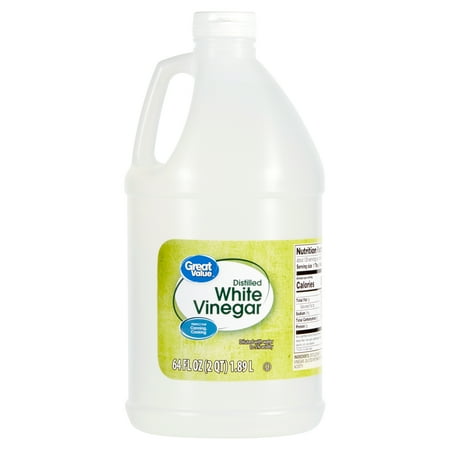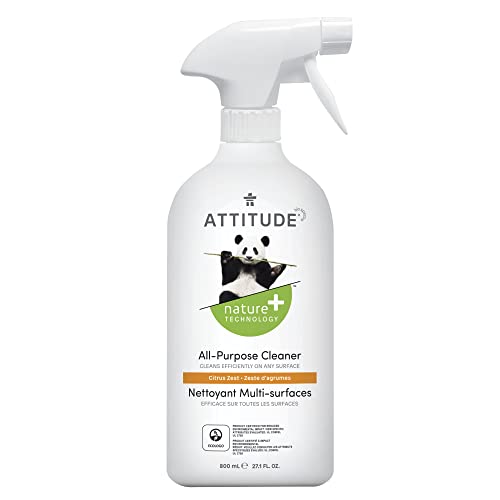4 signs you need to replace your microfiber cloths – plus how professional cleaners like me make them last longer
These cloths are more sustainable, but they aren't invincible


Chiana Dickson
As a professional cleaner with years of experience scrubbing, I've learned one lesson the hard way: Your tools matter just as much as your technique. That's why it is so important to know the signs you need to replace microfiber cloths.
Many people assume microfiber lasts forever, but even the best cloths wear out with time.
Here, I break down the four main signs you need to replace your microfiber cloths, and why this is essential knowledge to save time and frustration.
4 signs you need to replace microfiber cloths
1. They're no longer absorbant

A cloth pushing water around rather than soaking it up needs to be replaced.
One of the main perks of this essential cleaning tool is its absorbency. One of the first signs you need to replace microfiber cloths is that the cloth is pushing water around instead of soaking it up and it feels like the cloth is repelling moisture.
You might find yourself wiping the same spot over and over, only for it to stay damp. This is especially noticeable when drying countertops, mirrors, or car surfaces.
Over time, the tiny fibers that give microfiber its absorbency get coated in residues from fabric softeners, greasy substances, or even overly sudsy detergents. Once the fibers are sealed, they can’t do their job of pulling moisture in.
Luckily, you can extend the lifespan of your cloths by washing microfiber cloths correctly, using a gentle detergent (such as Tide Free & Gentle, from Target) free from fillers, fragrances, and fabric softeners. Similarly, skip the dryer or use the lowest heat setting as high heat can damage the fiber structure.
Design expertise in your inbox – from inspiring decorating ideas and beautiful celebrity homes to practical gardening advice and shopping round-ups.
For specific microfiber treatment, I suggest using microfiber detergent, available at Amazon, which is designed to strip buildup and restore the absorbency of microfiber cloths without leaving residue.
2. The edges are fraying

Damaged tools can effect your cleaning results.
Stitched borders wear out after many wash cycles, especially in hot water or high-heat drying. Aggressive scrubbing can also strain the seams, particularly with cheaper cloths that aren’t reinforced.
Look out for loose threads hanging off the cloth, edges curling up, or seams coming apart. Frayed edges often make the cloth feel awkward to fold or grip and leave a string of residue behind while cleaning.
Microfiber cloths are one of the cleaning tools to buy well and buy once, so spending more upfront can ensure they last longer (with proper use) in your home. Consider buying edgeless or heat-sealed cloths that are specifically designed to avoid this issue. I prefer the Kirkland Ultra Plush Microfiber Towels, from Amazon which have edge-sealed borders that hold up well over time with less risk of fraying and snagging.
As with absorbency, when cleaning cleaning supplies, it is also helpful to wash them in cold water and let them air dry to protect the stitching. Alternatively, use Multi-Purpose Scrub-it Sponges, also from Amazon, for heavy-duty tasks to protect your cloths from wear.
3. They leave behind lint or streaks

Streaky windows is an (ironically not) clear sign that you need new microfiber cloths.
One of the biggest home cleaning mistakes is using subpar tools that leave streaks and lint behind. While your surfaces might be disinfected, they will still look unclean.
You may need to replace your microfiber cloths if, for example, you wipe a surface and see little fibers left behind or visible streaks on glass and mirrors, or you buff stainless steel or glass, you’re also left with hazy marks or need to work much harder to get that polished shine. Sometimes it feels like you’re creating more mess than you’re cleaning.
This often happens because fibers break down over time, especially when cloths are washed with cotton items or exposed to heat. Older cloths shed more and lose the smooth finish needed for streak-free results.
Besides washing correctly, it can also be helpful to use a lint roller occasionally to remove loose fibers from older cloths and get a little more life out of your tools before replacing them. This reusable lint roller, from Walmart, is perfect if you are looking to cut down on plastic in your cleaning routine.
4. They feel slick or greasy after washing

If laundry doesn't remove build-up, it's time to replace your cloths.
The texture of your microfiber cloths will tell you a lot about the quality of clean you will achieve.
If the cloth has a slippery, almost oily feel, even straight from the laundry, you may need to replace it. You might also notice it smearing surfaces instead of cleaning them, and it may leave behind a haze, especially on mirrors or windows.
This is because oil and silicone residues from cleaning products (especially furniture polish, stainless steel cleaner, or kitchen grease) can cling to the fibers. Similarly, regular detergent often doesn’t break these down fully, so the cloth keeps spreading it around.
To prevent this, I suggest pre-soaking the cloths in warm water with a little white vinegar, from Target, before washing to break down the buildup. Otherwise, keep separate cloths for oily tasks and rotate them out faster than general-use cloths. Color-coding cleaning can make this distinction simpler.
What to shop

The Mr. Siga microfiber cloths are absorbent, lint-free, and non-abrasive , suitable for cleaning various surfaces. The pack includes 12 cloths in four colors, prefect for color-coding cleaning.

This white vinegar is perfect for stripping away product build-up, especially if you have used greasy cleaning products or washing cloths with fabric softener.

The Environmental Working Group (EWG) has certified Attitude products as non-toxic, meaning they contain no harsh chemicals or artificial compounds.
FAQs
What can you do with old microfiber cloths?
Old microfiber cloths can be used elsewhere in the home, such as for DIY tasks (for example, cleaning up after painting), or for cleaning up very dirty areas. Some wildlife shelters also accept donations of old, but clean microfiber cloths.
How can you refresh microfiber cloths?
You can add some more life back into your microfiber cloths by adding white vinegar to your laundry. Like washing towels with vinegar, washing microfiber cloths with vinegar can help to strip away any product buildup to increase absorbency.
Meet the expert

With numerous contributions in Homes & Gardens, Real Homes, The Spruce, and many more, Karina has extensive knowledge of both commercial and residential cleaning, and knows better than anyone how to break bad housekeeping habits for good.
The best way to extend the lifespan of your cloths and avoid the need to prematurely replace your microfiber cloths, is to avoid the most common microfiber cloth mistakes.

Karina is a professional cleaner and operations manager at Spekless Cleaning, which provides residential and commercial cleaning and maid services in Washington.
She has over six years experience overseeing all operations and quality control at Spekless.
- Chiana DicksonContent Editor
You must confirm your public display name before commenting
Please logout and then login again, you will then be prompted to enter your display name.